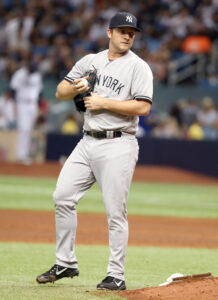The Tigers announced their 2023 coaching staff today, with many of the names returning from last year or already reported. The one new bit of information from today’s announcement is that Tim Federowicz has been brought aboard as a catching coach.
Federowicz, 35, will bring plenty of experience to the role, having been a big league catcher from 2011 through 2019 and working in the minors for even longer. He got into 163 MLB games over that time, suiting up for the Dodgers, Cubs, Giants, Astros, Red and Rangers. He never hit much in the big leagues, producing a batting line of .192/.241/.328. However, he managed to stick around for many years as a backup catcher due to his reputation for working well with pitching staffs.
He announced his retirement from playing after the 2021 campaign and immediately jump-started the coaching phase of his career. He served as manager of the Tacoma Rainiers in 2022, the Triple-A affiliate of the Mariners. He’ll now quickly jump to a catching job in the majors after just a single season of managing in the minors.



